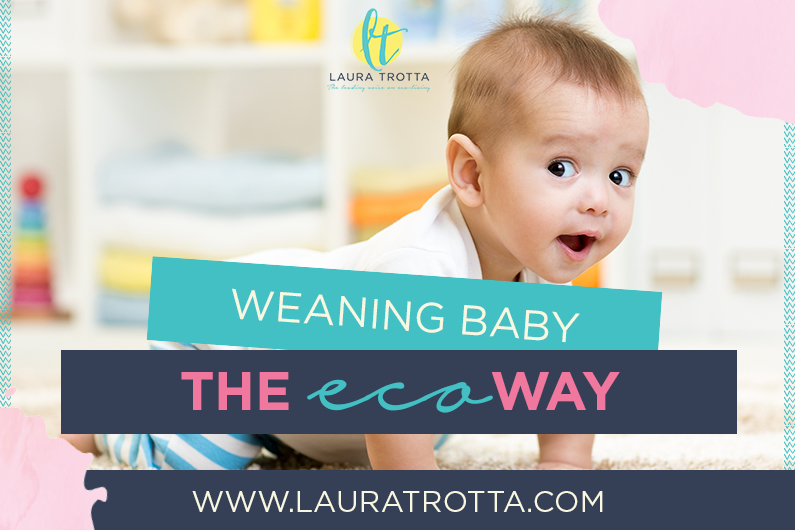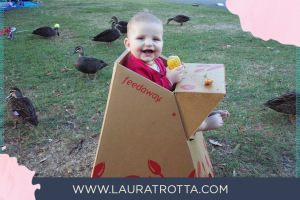You only need to venture down the baby aisle in your local supermarket to see the huge variety of first foods on offer.
From rice cereal to rusks, purees and casseroles, it’s easy to see how the member of the family with the smallest belly can quickly become the most expensive to feed. Sadly, the youngest member of the family can also generate the most meal-time waste since these small portions are all encased in small wraps and containers.
Introducing your baby to solids is by no doubt one of the most exciting steps in early parenting. In many cases, particularly if bub has been exclusively breastfed, it will be the first time that someone other than you will feed your baby. And just like everyone has an opinion on breastfeeding, you may soon realise that everyone also has an opinion on introducing solids.
From what age to start, to what foods to feed first and in what magic order, this milestone has been responsible for many a heated mum’s group discussion.
Like most mums, I too looked forward to having our son join us at the dinner table.
I’d invested in a respected baby cookbook, purchased some organic rice cereal and patiently counted down the days until he reached the magical six months of age, the recommended age to start solids at the time. I’d read about baby-led weaning and was genuinely interested in trying it out, but caved under the influence of strong-minded and well-meaning family members, and instead took the traditional puree path.
My eldest son’s first mouthful of solids was of organic rice cereal blended with breast milk. Within a few weeks I’d fed him homemade purees of most vegetables and fruits and was whipping up delicious organic casseroles. I’d puree, freeze in small portions, defrost, heat and feed.
He was my first born and I had time to be his personal chef and sit there and spoon feed him.
He also wasn’t fussy, had no intolerances or allergies and devoured most foods with gusto. At 10 months of age, I introduced fingers foods such as meatballs and by 12 months of age, he was easily eating family foods. All in all, it all seemed to go by very smoothly; he was a textbook weaning success.
Enter baby no.2. My gorgeous, unsettled, wakeful and determined second son.
By the time he reached six months of age I was severely sleep-deprived, exhausted and close to breaking point. The thought of pureeing foods and leisurely spoon feeding them to him, like I did my first son, was as enticing as having another baby. I’d studied baby-led weaning in great detail and was convinced it was the right choice for him and our family.
And it was.
Baby-led weaning is simply the act of baby feeding themselves solid food from the start, rather than being spoon-fed by someone else. They generally sit with the rest of the family at mealtimes and are given food in pieces the size and shape they can easily handle, rather than as purees or mashed foods.
I’d simply cook family meals and he would help himself to something from my plate. His first solid foods included watermelon and steamed carrot sticks. Over the following weeks and months I provided an assortment of healthy family foods like steamed vegetables, savoury pikelets, rissoles and fruit on his tray and he would work his way through them during our meal time. Even on the days he was on a slightly different schedule it was easy. I’d simply have him eating his dinner from his highchair at the kitchen bench next to me while I was putting the finishing touches to the family meal.
This process involved no extra work, was easy and time efficient. It also added minimal extra cost to our grocery bill as he ate the same food as the rest of the family. This differed dramatically to my friends who were spending a small fortune on commercial baby food.
Baby-Led Weaning also generated no rubbish. Our bins contained no baby food jars, packets, boxes or squeeze tubes. Of course there was some leftover food, and much of it on the floor, but our chickens happily accepted these leftovers and returned the favour by keeping our family in eggs.
One of the upsides of baby-led weaning is the growth in confidence and fine-motor skills. This results from the simple act of baby feeding themselves. Babies learn to roll, crawl, walk and talk when they’re ready so it only goes to say that babies who learn to eat solids when they are ready are naturally more confident and happy. There were no food battles or tantrums in our household when we practised baby-led weaning, just one happy baby feeding himself.
In both cases of weaning, both of my sons were confident in trying different foods and by 12 months of age were eating family meals. Should we ever have a third baby I will opt again for baby-led weaning, on the simple reasoning of time, ease, environmental and social benefits.
Weaning is about so much more than starting solids. It’s about welcoming baby to join the family at the kitchen table and enjoying the social and cultural aspects of sharing in one of life’s simple pleasures, food. Whether you choose to spoon feed your baby or try baby-led weaning, your baby’s health, our environment and your family’s budget will all benefit if you select wholefoods rather than packaged commercial baby foods.
I’d love to hear how you went about weaning your baby. Did you try Baby Led Weaning? Feel free to share your stories below!
This article was featured in Issue 40, January 2015 2015 of My Child Magazine
- Sustainable Home Design- factors to consider to maximise sustainability - July 28, 2022
- Advantage and Disadvantages of Tiny Houses - May 31, 2022
- How School Strike 4 Climate is Empowering Youth to Fight for Their Future - May 1, 2022




 Laura Trotta is one of Australia’s leading home sustainability experts. She has a Bachelor of Environmental Engineering, a Masters of Science (in Environmental Chemistry) and spent 11 years working as an environmental professional before creating her first online eco business, Sustainababy, in 2009. She has won numerous regional and national awards for her fresh and inspiring take on living an ‘ecoceptional’ life (including most recently winning the Brand South Australia Flinders University Education Award (2015) for the north-west region in SA and silver in the Eco-friendly category of the 2015 Ausmumpreneur Awards). With a regular segment on ABC Radio and with her work featured in publications like Nurture Parenting and My Child Magazine, Laura is an eco thought leader who’s not afraid to challenge the status quo. A passionate believer in addressing the small things to achieve big change, and protecting the planet in practical ways, Laura lives with her husband and two sons in outback South Australia.
Laura Trotta is one of Australia’s leading home sustainability experts. She has a Bachelor of Environmental Engineering, a Masters of Science (in Environmental Chemistry) and spent 11 years working as an environmental professional before creating her first online eco business, Sustainababy, in 2009. She has won numerous regional and national awards for her fresh and inspiring take on living an ‘ecoceptional’ life (including most recently winning the Brand South Australia Flinders University Education Award (2015) for the north-west region in SA and silver in the Eco-friendly category of the 2015 Ausmumpreneur Awards). With a regular segment on ABC Radio and with her work featured in publications like Nurture Parenting and My Child Magazine, Laura is an eco thought leader who’s not afraid to challenge the status quo. A passionate believer in addressing the small things to achieve big change, and protecting the planet in practical ways, Laura lives with her husband and two sons in outback South Australia. 


